The reason of Quarto putting the figures together is because of that special fig- prefixed label and not because you are using fig-cap. Your intended approach would work if you had used either a simple label (like label: test, i.e. not fig- prefixed) or no label at all and fig-cap.
So the following works as intended (almost!!!),
Note that, I have used a list structure in fig-cap so that three plots have different captions.
---
title: "Untitled"
format: html
---
## Quarto
```{r}
#| fig-cap:
#| - "Attribute in time in test1"
#| - "Attribute in time in test2"
#| - "Attribute in time in test3"
#| results: "asis"
#| message: false
#| echo: false
library(dplyr)
library(ggplot2)
library(purrr)
data_files = c(
"test1",
"test2",
"test3"
)
set.seed(176)
test1 = data.frame(year = 1991:2010, ratio = runif(20, 0, 1))
test2 = data.frame(year = 1991:2010, ratio = runif(20, 0, 1))
test3 = data.frame(year = 1991:2010, ratio = runif(20, 0, 1))
print_attr_plots = function(data) {
cat('\n\n### ', data, '\n')
data_tmp = get(data)
p = ggplot(data_tmp, aes(x = year, y = ratio)) +
geom_bar(stat = "identity", color = "black", fill = "white") +
ylab("Ratio") + xlab("Year") +
theme_grey(base_size = 10)
print(p)
}
walk(data_files, print_attr_plots)
```
rendered output
But the above approach is not quite enough (in my opinion). Because if you look at the output, you would see there are no Figure prefix in the captions and since you are not using a label, you can not refer to these figures.
So to solve this completely, you may want to use `Figure Divs,
---
title: "Untitled"
format: html
keep-md: true
---
## Quarto
```{r}
#| results: "asis"
#| message: false
library(dplyr)
library(ggplot2)
library(purrr)
data_files = c(
"test1",
"test2",
"test3"
)
set.seed(176)
test1 = data.frame(year = 1991:2010, ratio = runif(20, 0, 1))
test2 = data.frame(year = 1991:2010, ratio = runif(20, 0, 1))
test3 = data.frame(year = 1991:2010, ratio = runif(20, 0, 1))
print_attr_plots = function(data) {
cat('\n\n### ', data, '\n')
data_tmp = get(data)
p = ggplot(data_tmp, aes(x = year, y = ratio)) + geom_bar(stat = "identity", color = "black", fill = "white") + ylab("Ratio") + xlab("Year") + theme_grey(base_size = 10)
div_label <- paste0("#fig-", data)
cat("\n::: {", div_label, "}\n", sep="")
print(p)
cat("\n\nAttribute in time in ", data, "\n", sep="")
cat("\n:::\n")
}
walk(data_files, print_attr_plots)
```
check the plots @fig-test1, @fig-test2, @fig-test3
Here a separate Figure-Divb with id (which you can use in cross-referencing) and a caption is being created for each figure. Check out the linked documentation to know details about Figure-Divs.
rendered output
